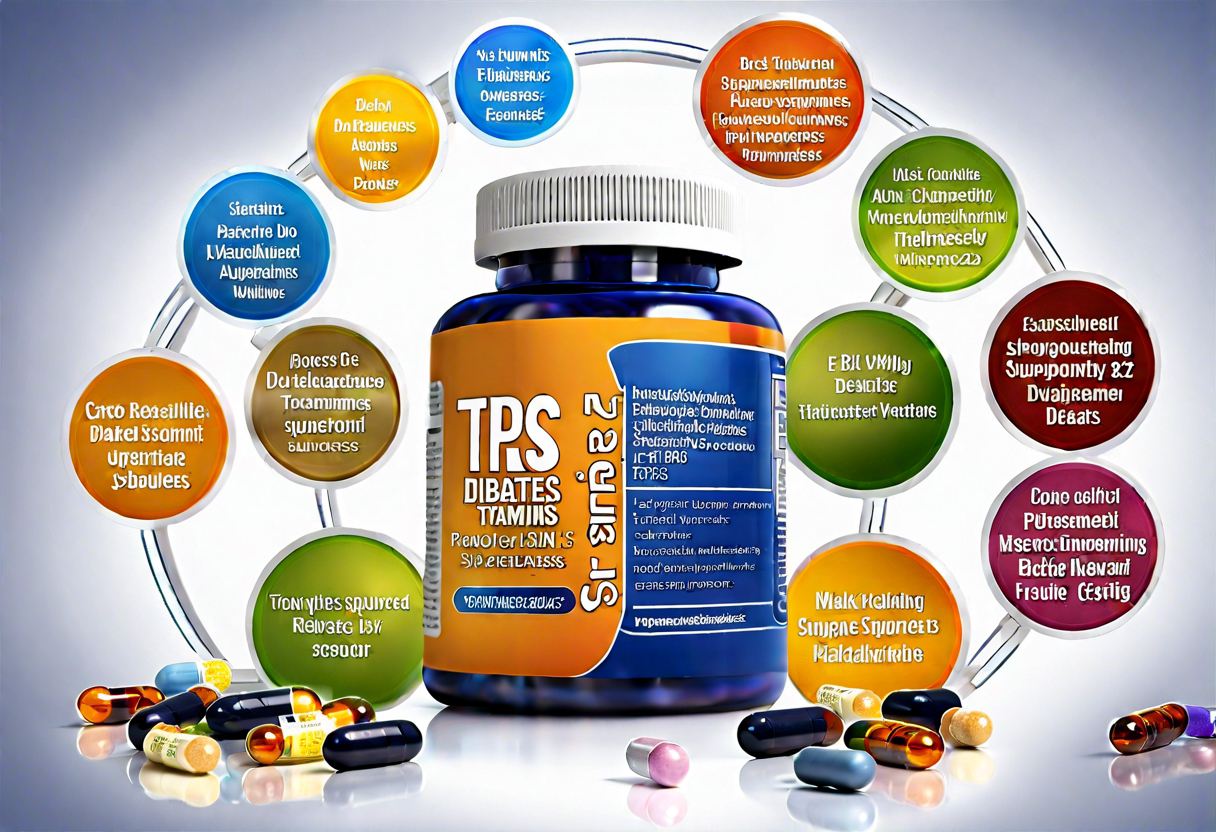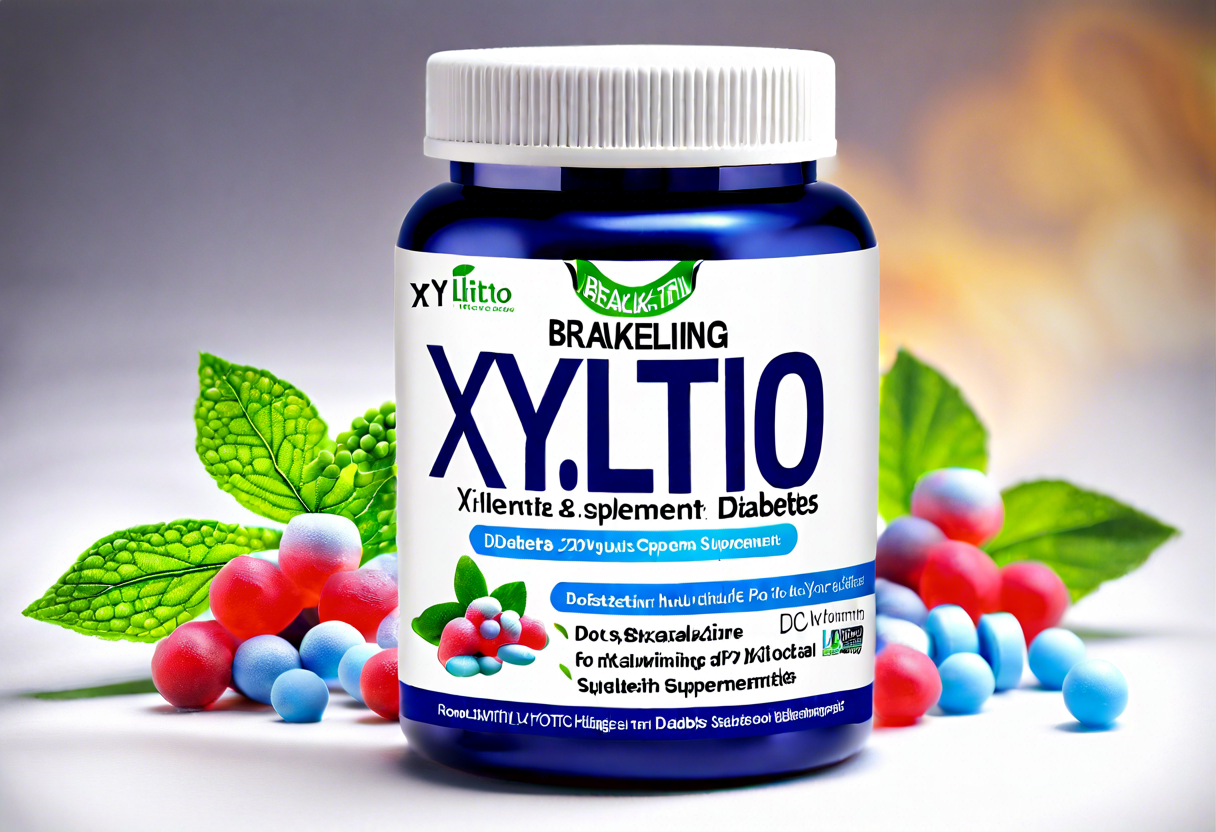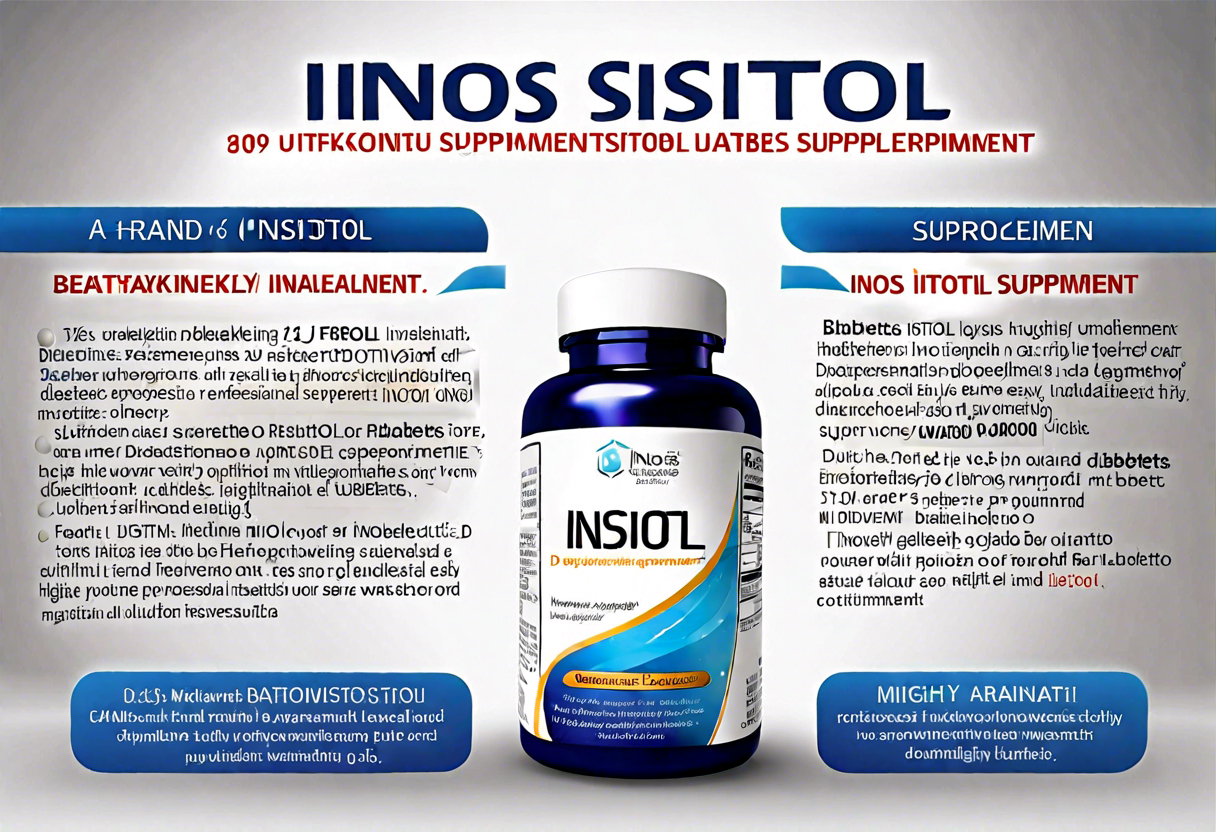Type 2 diabetes is a chronic health condition that affects the way the body processes blood sugar, or glucose. It is characterized by resistance to the action of insulin, a hormone that regulates the movement of sugar into cells, and inadequate insulin secretion by the pancreas. Over time, the resulting high levels of sugar in the bloodstream can lead to serious health complications.
Symptoms of type 2 diabetes can be gradual and subtle, making them easy to overlook. Common signs include increased thirst and urination, hunger, weight loss, fatigue, blurred vision, and slow-healing sores. However, some people with type 2 diabetes may not experience any symptoms in the early stages of the disease.
The exact cause of type 2 diabetes remains unclear, but it is known to be associated with genetic factors and lifestyle choices. Obesity, physical inactivity, and poor diet are significant risk factors. Effective management of type 2 diabetes involves a combination of medication, dietary changes, and increased physical activity to maintain blood sugar levels within a target range and to prevent or delay complications.
Understanding Type 2 Diabetes
Type 2 diabetes is a chronic condition affecting the way the body processes blood sugar (glucose). It concerns insulin’s role in this process and the body’s response to this hormone.
Definition and Differences
Type 2 diabetes occurs when the body doesn’t use insulin properly or doesn’t produce enough insulin, resulting in elevated glucose levels in the blood. This differs from type 1 diabetes, where the immune system mistakenly attacks and destroys insulin-producing cells in the pancreas. In type 2 diabetes, the pancreas usually still makes insulin, but the body’s cells are resistant to its effects.
The Role of Insulin
Insulin is a hormone produced by the pancreas and is essential for regulating blood sugar levels. Its primary function is to facilitate the uptake of glucose from the blood into the cells, where it is used for energy. Without sufficient insulin, glucose accumulates in the bloodstream, leading to high blood sugar levels.
Insulin Resistance
In the context of type 2 diabetes, insulin resistance is a key factor. It happens when cells in muscles, fat, and the liver start resisting or ignoring the signal that insulin sends out to grab glucose out of the bloodstream and put it into our cells. As a result, the body needs higher levels of insulin to help glucose enter cells.
Hormonal Interactions
Apart from insulin, other hormones also play a role in managing blood sugar. Hormones like glucagon and amylin work in conjunction with insulin to balance glucose levels. However, in type 2 diabetes, these hormonal interactions become disrupted due to insulin resistance, impacting glucose regulation.
Risk Factors and Causes
The development of type 2 diabetes is associated with a combination of lifestyle, genetic, and environmental factors. A family history of diabetes, obesity, and an inactive lifestyle significantly increase the risk.
Lifestyle and Environmental Factors
The choices individuals make in their daily lives can directly influence their risk of developing type 2 diabetes. Consumption of high-calorie, sugary foods and beverages contributes to obesity, while tobacco use can increase insulin resistance—the core characteristic of type 2 diabetes.
- Diet: A diet high in processed foods and sugar is associated with an increased risk.
- Physical Activity: Active individuals have a lower risk, indicating the importance of regular exercise.
Genetic Predisposition
Type 2 diabetes has a strong hereditary component. Specific genes are linked to the development of this condition, explaining why it tends to run in families.
- Family History: Individuals with a close relative who has type 2 diabetes are at a higher risk.
- Genetic Mutations: Certain mutations can affect insulin production and glucose metabolism, increasing susceptibility.
Impact of Obesity and Physical Inactivity
A sedentary lifestyle paired with excessive caloric intake is a major driver for the onset of type 2 diabetes.
- Obesity: Excess adipose tissue, especially around the abdomen, is closely linked to insulin resistance.
- Sedentary Lifestyle: Lack of physical activity exacerbates weight issues and metabolic dysfunctions.
Age and Ethnic Background
The risk of type 2 diabetes increases with age, and certain ethnic groups are more likely to develop the disease.
- Age: Individuals over 45 are at a greater risk, though the prevalence among younger people is increasing.
- Race/Ethnicity: Ethnicity Relative Risk African American Higher Hispanic Higher Native American Higher Asian Higher Caucasian Lower
These groups have different rates of type 2 diabetes which may be due to variations in lifestyle, diet, and genetic factors.
Recognizing the Symptoms
When identifying type 2 diabetes, recognizing specific symptoms is crucial for prompt diagnosis and management. Both men and women experience common indicators, while some symptoms are unique to women.
Common Physical Symptoms
Individuals with type 2 diabetes commonly experience a host of physical symptoms that are signals of high blood sugar levels. Crucial symptoms to be attentive to include:
- Increased thirst and frequent urination: Excess sugar building up in your bloodstream causes fluid to be pulled from tissues, leading to dehydration and a need to urinate more often.
- Increased hunger: Without enough insulin to move sugar into your cells, your muscles and organs become energy-depleted, triggering intense hunger.
- Fatigue: This is a result of insufficient sugar moving into your cells, leaving you tired and irritable.
- Blurred vision: High levels of blood sugar can lead to the swelling of the lenses in your eyes, affecting your ability to focus.
- Numbness or tingling: Excess sugar can cause nerve damage, often manifested as tingling or numbness in the hands and feet.
- Sores that heal slowly: High blood sugar can impact blood flow and cause nerve damage, which can make it harder for your body to heal wounds.
Symptoms Specific to Women
Women may experience certain symptoms due to the interplay between blood sugar levels and hormonal changes:
- Polycystic Ovary Syndrome (PCOS): Women with type 2 diabetes may have PCOS, characterized by irregular menstrual cycles, excessive hair growth, and obesity.
- Gestational diabetes history: Those who have had gestational diabetes or given birth to a baby weighing more than 9 pounds are at higher risk and may display symptoms sooner.
Long-term Complications
If left untreated, type 2 diabetes can lead to significant long-term complications that can impact overall health. Some of these include:
- Cardiovascular disease: Diabetes significantly raises the risk for heart disease, stroke, and high blood pressure.
- Kidney damage (nephropathy): The kidneys can be harmed by the excessive burden of filtering the blood’s high sugar content, which may eventually require dialysis or a transplant.
- Nerve damage (neuropathy): The excess sugar in your system can injure the walls of the tiny blood vessels (capillaries) that nourish your nerves, especially in the legs, resulting in pain and numbness.
Diagnostic Methods
Effective diagnosis of Type 2 diabetes relies on accurate measurement of blood sugar levels through various tests. Physicians use these tests to determine if blood glucose is consistently high, indicating diabetes.
Blood Glucose Testing
For initial screening and diagnosis, blood tests that measure glucose levels are essential. The most common blood glucose tests include:
- Fasting Plasma Glucose (FPG): This test measures blood sugar on an empty stomach. Patients must not eat or drink anything except water for at least 8 hours before the test.
- Oral Glucose Tolerance Test (OGTT): This test involves drinking a sugary liquid, and blood sugar levels are tested over the next two hours. It shows how the body processes glucose.
Table: Blood Glucose Test Values for Diagnosis
| Test | Normal | Prediabetes | Diabetes |
|---|---|---|---|
| Fasting Plasma Glucose | <100 mg/dL | 100-125 mg/dL | ≥126 mg/dL |
| Oral Glucose Tolerance Test | <140 mg/dL | 140-199 mg/dL | ≥200 mg/dL |
A1C Test and Other Metrics
The A1C test, also known as the hemoglobin A1c or HbA1c test, provides insight over a longer period. It reflects average blood sugar levels over the past 2-3 months. An A1C level of 6.5% or higher on two separate tests indicates diabetes. Other metrics that factor into diabetes diagnosis include the Random Plasma Glucose Test, which doesn’t require fasting and can be taken at any time of the day — blood sugar levels of 200 mg/dL or higher suggest diabetes, particularly if there are symptoms of high blood sugar.
Importance of Early Diagnosis
Diagnosing Type 2 diabetes early is crucial to prevent or delay complications. Sustained high blood glucose can lead to severe health problems like heart disease, nerve damage, and kidney issues. Knowing one’s blood sugar levels through appropriate tests allows for timely management and treatment.
Treatment and Management
Effective treatment and management of type 2 diabetes involve a combination of lifestyle modifications and medical interventions to control blood sugar levels and prevent complications.
Lifestyle Changes and Diet
Individuals with type 2 diabetes are recommended to adopt significant lifestyle and dietary changes. A healthy diet rich in fiber, such as whole grains, vegetables, and fruits, is key to managing blood glucose levels. Caloric intake should align with energy needs to facilitate weight management. Designing a personalized meal plan with the help of an endocrinologist or dietitian can lead to more effective control of blood sugar levels.
Medications and Insulin Therapy
Medication is often prescribed for type 2 diabetes when lifestyle changes alone do not sufficiently control blood sugar levels. Metformin is typically the first-line medication due to its efficacy in lowering glucose production in the liver. For some, insulin therapy might be necessary to maintain optimal blood glucose levels. The exact medication regimen should be determined by an endocrinologist.
Monitoring and Coping Strategies
Regular monitoring of blood sugar levels is crucial in the management of type 2 diabetes. Patients are taught how to use blood glucose meters and interpret the results. Understanding daily fluctuations can help in making immediate dietary or activity adjustments. Coping strategies such as support groups or counseling are beneficial for continual motivation and emotional wellbeing.
Weight Loss and Physical Exercise
Physical activity is a cornerstone of diabetes management. Regular exercise helps the body use insulin more efficiently and is essential in weight loss efforts. Burning more calories than consumed leads to weight loss, which can significantly improve blood sugar control. Moderately intense activities, such as brisk walking for at least 150 minutes a week, are generally recommended.
Complications and Comorbidities
Individuals with Type 2 diabetes may face a host of complications and comorbidities that can significantly impact their overall health. These conditions are often the result of prolonged high blood sugar levels, which can damage various body systems.
Neuropathy and Nerve Damage
Neuropathy, or nerve damage, is a common complication of diabetes. High blood sugar can harm the capillaries that supply nerves with oxygen and nutrients. Symptoms may include tingling, numbness, or pain in the extremities. Neuropathy affects up to 50% of Americans with diabetes.
- Common symptoms: Tingling, numbness, pain
- Prevention: Blood sugar management, diabetes medications
Heart Disease and Stroke
People with Type 2 diabetes have an increased risk of heart disease and stroke. Diabetes accelerates the hardening and narrowing of arteries, leading to poor blood circulation and potential heart attacks or strokes. Management includes maintaining healthy blood pressure and cholesterol levels.
- Risk factors: Stress, high blood pressure, high blood sugar
- Management: Lifestyle changes, medications for cholesterol and blood pressure
Kidney Disease and Hypertension
Diabetes can cause kidney disease, known as diabetic nephropathy, by damaging the delicate filtering system of the kidneys. Long-term high blood sugar exacerbates the damage. Hypertension, or high blood pressure, often accompanies kidney disease and requires diligent monitoring and control.
- Monitoring: Regular check-ups for kidney function
- Treatment: Blood pressure control, specific diabetes medications
Eye Health and Diabetes
Diabetes can lead to several eye health issues, including diabetic retinopathy, where high blood sugar levels cause damage to the retina’s blood vessels. Early detection is crucial as damage to the eyes can be irreversible. Regular eye exams are important in catching and addressing issues early.
- Eye conditions: Diabetic retinopathy, cataracts, glaucoma
- Preventive measures: Tight blood sugar control, annual eye exams
Preventive Measures
Proper management and preventive strategies can significantly reduce the risk of developing type 2 diabetes. These measures focus on lifestyle modifications and policy interventions aimed at mitigating key risk factors.
Preventing Type 2 Diabetes
Efforts to prevent type 2 diabetes typically revolve around lifestyle changes. Key strategies include:
- Regular Exercise: Engaging in at least 150 minutes of moderate-intensity activity per week can enhance insulin sensitivity and lower blood glucose levels.
- Healthy Diet: Consuming a balanced diet rich in whole grains, fiber, and healthy fats can help manage weight and reduce blood sugar spikes.
- Weight Management: Maintaining a healthy weight is crucial as excess body fat, particularly around the abdomen, can increase the body’s resistance to insulin.
Prediabetes and Intervention
When it comes to individuals with prediabetes, early intervention is vital:
- Screening:
- Adults should have their blood sugar levels checked regularly to detect prediabetes early.
- Monitoring A1C levels, fasting blood sugar, or an oral glucose test can help with early detection.
- Lifestyle Modifications:
- Reducing intake of sugary drinks and refined sugars can significantly lower the risk of progressing from prediabetes to diabetes.
- Incorporating cholesterol-lowering foods can help manage high cholesterol, a common risk factor.
Community and Policy Efforts
Population-wide changes can be more effective with support from policy-level interventions:
- Public Health Campaigns: Education on the risks of smoking, overconsumption of sugar, and a sedentary lifestyle is important for prevention.
- Access to Healthy Choices: Policies ensuring availability of affordable, nutritious food and safe spaces for physical activity can aid in prevention for the entire population.
By implementing these preventive measures, coupled with public awareness and policy enforcement, the incidence of type 2 diabetes can potentially be reduced.
Living With Diabetes
Managing diabetes requires adapting to new routines and understanding the importance of maintaining a healthy lifestyle. Rigorous control of blood sugar levels is key, and patients often rely on diabetes medications to help regulate insulin and glucose in the body.
Daily Life and Routine
For individuals living with diabetes, daily life encompasses routine monitoring of blood sugar levels to prevent episodes of high blood sugar, which can contribute to long-term health issues such as amputation and cardiovascular disease. Adhering to prescribed medication schedules is crucial, with many depending on pens or oral medications to control their diabetes. Lifestyle adjustments, including dietary changes to manage cholesterol, and energy levels, are essential. Those who are overweight or have obesity are often advised to lose weight to better manage their condition.
- Blood Sugar Monitoring: Check levels as specified by a healthcare provider.
- Medication: Take insulin or oral diabetes medications as directed.
- Diet: Incorporate balanced meals low in sugary drinks and high-fat foods.
- Physical Activity: Engage in regular exercise to maintain a healthy weight.
Support Networks and Counseling
Living with diabetes can be challenging, and stress can negatively impact blood sugar levels and overall health. Support networks, including healthcare professionals and peer groups, offer emotional and practical support. Counseling may help address the psychological aspects of managing a chronic condition like diabetes. Building a strong support network is advantageous for maintaining optimal health and managing the demands of the condition.
- Healthcare Team: Regular consultations with endocrinologists, dietitians, and diabetes nurses.
- Support Groups: Participation in local or online groups for shared experiences and advice.
- Mental Health: Access to therapists or counselors who specialize in chronic illness.
Future Perspectives and Research
Research in diabetes is ongoing, with a focus on improving treatment options and ultimately finding a cure. New medications are being developed to offer better blood sugar control with fewer side effects. Studies on the impact of lifestyle changes on diabetes are providing a clearer picture of how diet and exercise influence the development and progression of the disease. Research into genetic factors offers hope for targeting interventions to at-risk groups, such as the Pacific Islander community, which has a higher incidence of adult-onset diabetes.
- New Medications: Exploration of innovative diabetes medications with improved efficacy.
- Lifestyle Research: Advancements in understanding the correlation between lifestyle changes and diabetes management.
- Genetic Studies: Investigations into the genetic predispositions for diabetes among specific populations.
Frequently Asked Questions
This section addresses common questions regarding type 2 diabetes, providing evidence-based answers to clarify symptoms, management, lifestyle factors, prevention strategies, and the differences from type 1 diabetes.
What are the common symptoms indicating the presence of type 2 diabetes?
Individuals with type 2 diabetes often experience symptoms such as increased thirst, frequent urination, hunger, fatigue, and blurred vision. Some may also show signs of slow-healing sores or frequent infections.
How can type 2 diabetes be effectively managed or treated?
Type 2 diabetes management typically involves lifestyle changes, such as adopting a healthy diet and regular exercise. Medications, including insulin therapy, may also be prescribed to help control blood glucose levels.
What lifestyle factors contribute to the risk of developing type 2 diabetes?
Certain lifestyle choices increase the risk of developing type 2 diabetes, such as a high-calorie diet rich in processed foods, sedentary behavior, obesity, and smoking.
Can type 2 diabetes be prevented, and if so, how?
While not all cases are preventable, type 2 diabetes prevention efforts focus on maintaining a healthy weight, engaging in physical activity, and eating a balanced diet to reduce risk.
What are the potential complications associated with type 2 diabetes if not properly managed?
Uncontrolled type 2 diabetes can lead to severe health complications, including heart disease, kidney damage, nerve damage, vision problems, and an increased risk of stroke.
In what ways does type 2 diabetes differ from type 1 diabetes?
Type 2 diabetes results from the body’s ineffective use of insulin, often associated with lifestyle factors and genetic predisposition, whereas type 1 diabetes is an autoimmune condition where the body’s immune system attacks insulin-producing cells.









